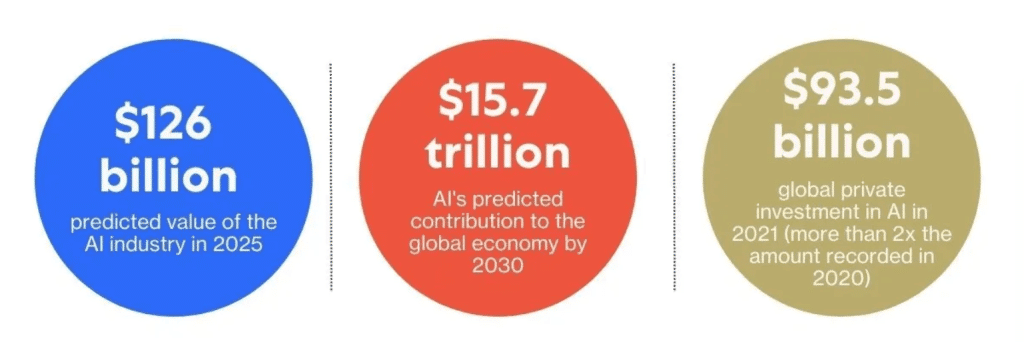New technology envelops us every day, and autonomous marketing is positioned to become the backbone of the marketing and advertising industry, all thanks to the ingenuity of artificial intelligence.
Today, top-performing marketers are using autonomous marketing to design their customer journeys and automate messages. With such easy access to a huge amount of customer data, the standard customer journey has become an increasingly complex, customer-centric view of customers spread out across multiple channels and touchpoints. And without automation, managing the end-to-end customer journey is near impossible.

The impact of this functionality has already been felt across the industry, becoming much more integrated. But what’s the next step? Does autonomous marketing automation make sense for your industry? What does the future look like and will it impact your marketing strategy?
What is autonomous marketing?
An article written by Deloitte Digital, explains autonomous marketing as using, “predictive capabilities to personalise customer relationships in real time with content, recommendations, fulfillment, and even purchase follow-up that anticipate people’s needs.”
To put it simply, tasks like optimising digital campaigns, customer journey management or your customer support agents using chatbots, are all now being replaced with AI technology. This allows the activity to get done more efficiently leaving the marketer to focus on bigger picture items.
The advent of predictive personalisation has even taken this one step further, by enabling highly accurate prediction of imminent individual consumer purchases to be made, and acted upon, to secure ever greater affinity with each individual consumer. Most important of all is that this alien interaction with each client actually nurtures loyalty and additional sales, otherwise lost, as it precludes access by competitors to your consumers, by offering each individual exactly what they want, when they want it, before anyone else knows they’re in the market.
Consider the usual route to making a purchase by the consumer, may involve looking at multiple sites, by which time Google has spotted the pattern, inundated the customer with ads, and in so doing and generated clicks, and captured by interested parties. Instead though, PPS (predictive personalisation software) has valued their perfect potential purchase to have landed in their inbox, lead them to their ideal product and, as a trusted retailer already established, they are naturally more inclined to make that purchase from you, absent of anyone else ever knowing about it.
What can we do with autonomous marketing now?
Computer scientists are still in the early stages of creating fully-fledged autonomous marketing systems. This may seem surprising when current marketing automation software solutions are already so powerful. But there is still a long way to go.
Just like in a lead nurturing campaign, AI needs to gain trust with its target audience. CMOs won’t just turn customer engagement over to an AI bot — they need time to develop confidence in the validity of the system. This can take a long time, most likely longer than it takes for the technology itself to develop.
PPS software has been identified by all the leading research facilities around the world including Forrester, Bain Statista and McKinsey to deliver a twenty fold increase in return on investment more that omni-channel, site personalisation, social-media and segmented email marketing combined.
This is just the tip of the iceberg. As adoption increases and technology improves, autonomous marketing capabilities are set to help marketers make even more valuable predictions.
Over the next five years, expect autonomous marketing to:
- Find patterns in data quicker than ever, bringing more insights to the surface
- Comprehend insights and make intuitive suggestions
- Execute decisions within set thresholds and parameters
- Bring full autonomation to the marketing industry — resulting in more room for creative marketing strategy
Why autonomous marketing automation just makes sense
We might not all be comfortable with choosing the autopilot function on a Tesla. But there are some areas in life where autonomous automation will save you time, resources and remove a little thing called human error. Marketing is one of them.
Today, autonomous marketing software is already producing marketers who are faster, smarter and better at their jobs. It improves the capabilities of marketing professionals.
Being wholly autonomous means the zero human input, and there are two immediate, far-reaching, benefits of that firstly that zero staff means zero staff overheads. no holidays, sick-pay, training, office rent, how much do you staff really cost? This means the ROI on your marketing just shot up significantly, as the breakeven point is so much easier to achieve. Secondly, and this should be the really deal clincher the accuracy of the identification of the product with the single highest purchase propensity, to present to each individual is perpetual and ever perfecting.
A human being, with all their foibles and idiosyncrasies cannot compete against a data accurate machine, that is identifying aspects beyond the comprehension of even he most brilliant marketer. It’s not just the product selection itself, it is that individual’s actions as part of their purchasing, that add to the data to perfect which products to offer, and when. For example, if a customer acts in a certain way to make a purchase looking at multiple similar things, then offering those other products around that choice, can clinch it rather than merely showing them a finite solution.
Keeping current
The advent of the marketing tech stack has meant businesses have needed to adapt to new processes, skill requirements and organisational structures. The past few years of digital transformation have represented an extreme change for traditional marketers, but also an entirely necessary one.
Progressively-minded businesses who have implemented data-driven, integrated tech stacks are now the best-equipped for an inevitable autonomous future.
Human limitations
Marketers are already using tech stacks to leverage and action huge amounts of data. These platforms drive productivity and revenue at a scale that would have previously been impossible to manage. In fact, the proficiency of well-constructed marketing stacks is so good that their capabilities already exceed the potential of human beings.
At the current pace of data growth, there’s literally no way for marketers to keep up with the sheer volume and complexity of highly personalised, multi-channel, customer-centric marketing systems. That’s not an attack on the skills or intelligence of the modern marketer — it’s just too much information for the human brain to process.
Affordability
In the past few years, affordable autonomous marketing solutions have started popping up in response to expensive, packaged marketing software.
Many brands now offer an affordable solutions that allows you to integrate your tech stack into one data unification and marketing automation solution. This means businesses of any size can start to organise and unify their data, create automated campaigns, and set themselves up for the future.
Decision making capability
Marketers are looking to autonomous marketing models, where machine learning will be able to make predictions on audience behaviour. These predictions will be based on browsing history, purchasing behaviour, customer preference and customer support information.
This collection of data will then be used to create an automated marketing response delivering the right message, at the right time, to the right person. The tech won’t be slowing down any time soon.
Benefits of autonomous marketing
As the autonomous marketing landscape continues to grow and evolve, let’s take a look at some of the real benefits marketers can expect from autonomous marketing.
Simplicity
The sheer volume of products required in the average marketing tech stack is out of control. Appropriately named the stackpocalypse, there is no current sign of the volume decreasing any time soon. For marketers to adopt and execute autonomous marketing, they have to be able to implement new products and tech seamlessly. Automation must be packaged as a core software feature, rather than an afterthought.
Native integration
Marketers are already using a suite of platforms to communicate with their audiences across multiple channels. CRM systems, social media accounts and analytics software are all critical considerations.
When autonomous marketing automation evolves, machine learning can take all your customer interactions and provide a flawless customer experience for them at their next touchpoint. For example, a known customer in the United States searches for a flight to Sydney, Australia. They can then be served up accommodation or rental car service recommendations in Sydney. And once they purchase the flight, they might receive extra offers on experiences like a walk across the Harbour Bridge.
Efficiency measures
There’s no doubt that autonomous marketing will improve marketers’ ability to handle time and resource intensive tasks. Once implemented, predictive personalisation, data integration, customer journey mapping and analysis will all be more efficient.
The future of autonomous marketing automation
As mentioned, we have only touched on the surface of autonomous marketing automation. To reach its next milestone, the current marketing systems that are in place will need more artificial intelligence integration. Autonomous marketing automation needs to learn and grow using this AI, in order to essentially govern itself.
uCurrently, AI has the stigma of being incapable of creating any unique coherent creativity. AI systems are generally limited to tasks like finding patterns in data, predicting behaviours (based on data) and making rudimentary suggestions. This is changing fast.
Today, it is a marketer’s responsibility to interpret metrics and analytics, making the final decision to continue or stop a campaign. The future will see an autonomous marketing system be able to decipher those results and can automatically make the optimisation itself.
Automated marketing solutions are going to be incredibly important as marketing intelligence evolves. Just look at the way marketing has changed in the past 5 years — everything is becoming more complex and fragmented every day. Consumers have come to expect a level of personalisation in digital marketing that is impossible without automation, and they are accustomed to communications being tailored to their interests. Marketers need automation to deliver on these expectations.
To continue to deliver a hyper-personalised experience, brands are getting more creative when targeting each individual consumers, as gone are the days of discussing audiences.
The final word
We’ve come to a crossroads where autonomous technology has met legitimate, real-world applications. Autonomous marketing is going to be a critical part of the marketplace.
Marketing teams need to deepen their understanding and start testing automation solutions that match market pacing. The future is coming, ready or not.
SwiftERM is a Microsoft partner company.
Article Classification:






